Chapter: Mechanical : Fluid Mechanics And Machinery : Turbines
Turbines - Fluid Mechanics
TURBINES
PRE REQUEST DISCUSSION
Hydraulic Machines
are defined as
those machines which
convert either hydraulic energy (energy possessed
by water) into mechanical energy (which is further
converted into electrical energy) or
mechanical energy into hydraulic
energy.
The hydraulic machines, which convert the
hydraulic energy into mechanical energy, are called turbines.
Turbines are defined as the hydraulic machines
which convert hydraulic energy into mechanical energy. This mechanical energy
is used in running an electric generator which is directly coupled to the shaft
of the turbine. Thus the mechanical energy is converted into electrical energy.
The electric power which is obtained from the hydraulic energy (energy of water)
is known as Hydro- electro power.
In our subject point of view, the following
turbines are important and will be discussed one by one.
1. Pelton
wheel
2. Francis
turbine
3. Kaplan
turbine
Concept
Turbines are defined as the
hydraulic machines which convert hydraulic energy into mechanical energy. This
mechanical energy is used in running an electric generator which is directly
coupled to the shaft of the turbine
FLUID TYPES OF
TURBINE
Water Hydraulic
Turbine
Steam Steam
Turbine
Froen Vapour
Turbine
Gas
or air Gas Turbine
Wind Wind
Mills
CLASSIFICATION OF HYDRAULIC TURBINES
1. According
to the action of the water flowing
2. According
to the main direction of flow of water
3. According
to the head and quality of water required
4. According
to the specific speed
HEAD AND EFFICIANCES OF PELTON WHEEL
1. Gross
head
2. Effective
or Net head
3. Water and
Bucket power
4. Hydraulic
efficiency
5. Mechanical
efficiency
6. Volume
efficiency
7. Overall
efficiency
IMPULSE TURBINE
In an impulse turbine, all the
energy available by water is converted into kinetic energy by passing a nozzle.
The high velocity jet coming out of the nozzle then impinges on a series of
buckets fixed around the rim of a wheel.
Tangential Flow Turbine, Radial And Axial Turbines
1. Tangential flow turbine
In a tangential flow turbine,
water flows along the tangent to the path of runner. E.g. Pelton wheel
2. Radial flow turbine
In a radial flow turbine, water
flows along the radial direction and mainly in the plane normal to the axis of
rotation, as it passes through the runner. It may be either inward radial flow
type or outward radial flow type.
3. Axial flow turbine
In axial flow turbines, water
flows parallel to the axis of the turbine shaft. E.g. kaplan turbine
4. Mixed flow turbine
In a mixed flow turbine, the
water enters the blades radiallsy and comes out axially and parallel to the
turbine shaft .E.g. Modern Francis turbine.
In our subject point of view, the
following turbines are important and will be discussed one by one
1. Pelton
wheel
2. Francis
turbine
3. Kaplan
turbine
PELTON WHEEL OR PELTON TURBINE
The Pelton wheel is a tangential
flow impulse turbine and now in common use. Leston A Pelton, an American
engineer during 1880,develops this turbines. A pelton wheel consists of
following main parts.
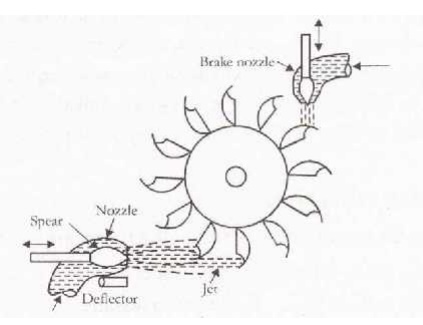
1. Penstock
2. Spear and
nozzle
3. Runner
with buckets
4. Brake
nozzle
5. Outer
casing
6. Governing
mechanism
1 VELOCITY TRIANGLES, WORKDONE, EFFICIENCY OF
PELTON
WHEEL INLET AND OUTLET VECTOR DIAGRAMS
Let V =
Velocity of the jet
u =
Velocity of the vane (cups) at the impact point u
= DN/ 60
where D = Diameter of the wheel
corresponding to the impact point = Pitch circle diameter.
At inlet the shape of the vane is
such that the direction of motion of the jet and the vane is the same.
i.e., Ȑ= 0, ș= 0
Relative velocity at inlet
Vr = V —u
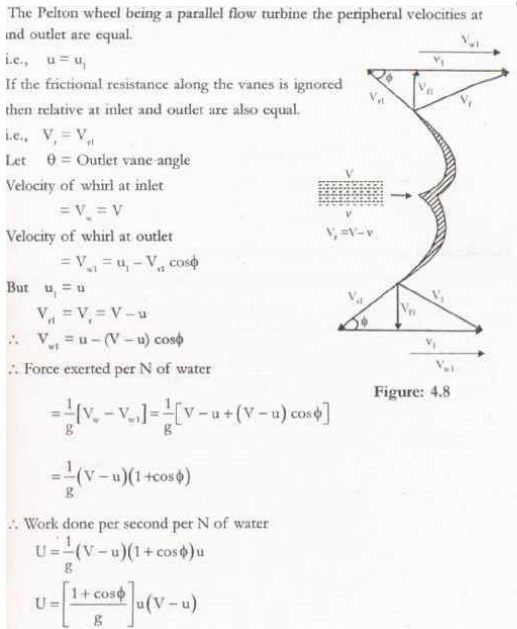
Hydraulic efficiency
This is the ratio of the workk
done per second per head at inlet to the turbine.
Energy head at inlet = V2/2g
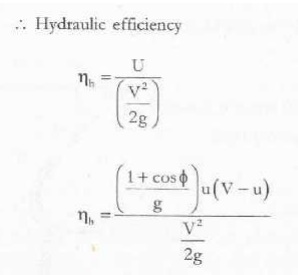
Condition
for maximum hydraulic efficiency
For a given jet velocity for efficiency to be
maximum, word done should be maximum
Work done per second per N of
water

Hence for the condition of
maximum hydraulic efficiency, the peripheral speed of the turbine should reach
one half the jet speed.
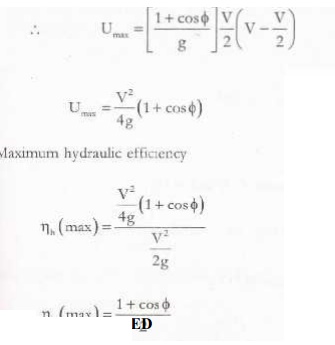
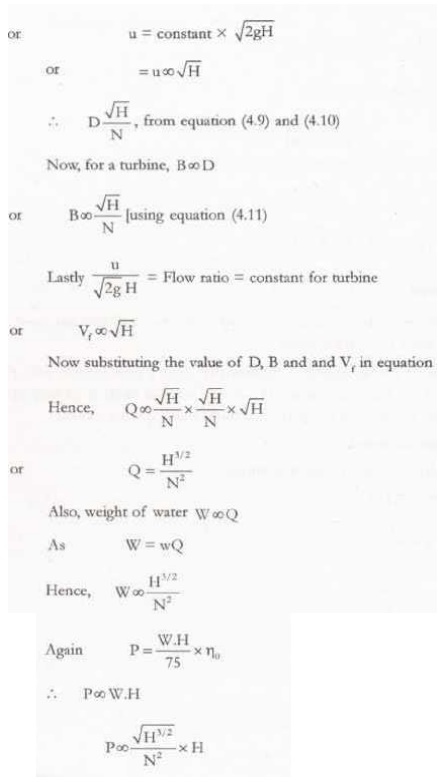
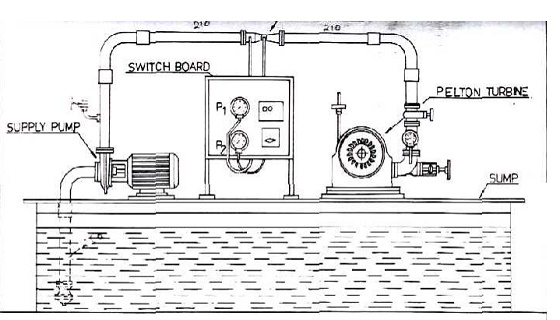
SPECIFIC
SPEED
[ The speed of any water turbine is represented by
N rpm. A turbine has speed, known as specific speed and is represented by N
‘ Specific
speed of a water turbine in the speed at which a geometrically similar
turbine
would run if producing unit power (1 kW) and working under a net head of 1 m.
Such a turbine would be an imaginary one and is called specific turbine.
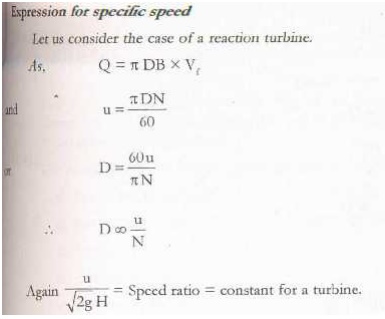
FRANCIS TURBINE
Francis turbine is an i nward
flow reaction turbine. It is developed b y the American engineer James B.
Francis. In the earlier stages, Francis turbine had a purely ra dial floe
runner. But the modern Francis turbine is a mixed flow reaction turbine in
which the water enters the runner radially at its outer peripher y and leaves
axially at its centre. This arrangement provides larger discharge area with
prescribed diameter of the runner. The main parts such as
1. Penstock
2. Scroll or
Spiral Casing
3. Speed
ring or Stay ring
4. Guide
vanes or Wickets gat es
5. Runner
and runner blades
6. Draft
tube
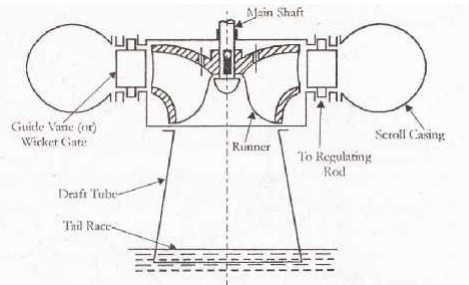
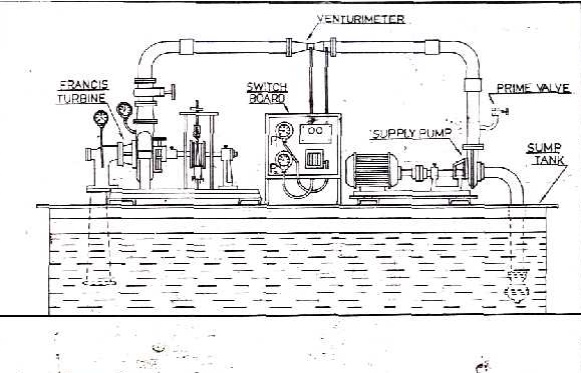
KAPLAN TURBINE
A Kaplan turbine is an axial flow
reaction turbine which was developed by Austrian engineer V. Kaplan. It is
suitable for relatively low heads. Hence, it requires a large quantity of water
to develop large power. The main parts of Kaplan turbine, they are
1. Scroll
casing
2. Stay ring
3. Guide
vanes
4. Runner
5. Draft
tube
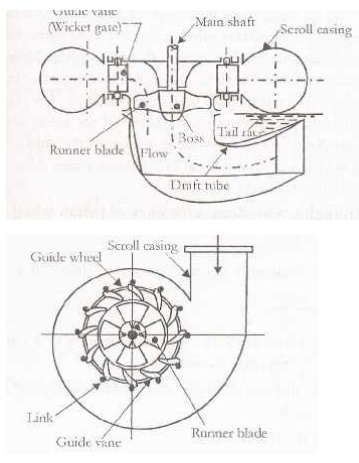
PERFORMANCE OF TURBINES
Turbines are often required to work under varying conditions
of head, speed, output and gate opening. In order to predict their behavior, it
is essential to study the performance of the turbines under the varying
conditions. The concept of unit quantities and specific quantities are required
to
The behavior of a
turbine is predicted working under different conditions.
Comparison is
made between the performance of turbine of same type but of different sizes.
The performance of turbine is compared with different types.
DRAFT TUBE
The pressure at the exit of the runner of a
reaction turbine is generally less than atmospheric pressure. Thus the water at
the exit of the runner cannot be directly discharged to the tail race. A pipe o
gradually increasing area is used for discharging water form the exit of the
turbine to the tail race. This pipe of gradually increasing area is called a
draft tube.
SPECIFIC
SPEED
Homologus units are required in governing
dimensionless groups to use scaled models in designing turbomachines, based geometric
similitude.
Specific speed is the speed of a geometrically
similar turbine, which will develop unit power when working under a unit head.
The specific speed is used in comparing the different types of turbines as
every type of turbine has different specific speed. In S.I. units, unit power
is taken as one Kw and unit as one meter.
GOVERNING OF TURBINES
All the modern hydraulic turbines are directly
coupled to the electric generators. The generators are always required to run
at constant speed irrespective of the variations in the load. It is usually
done by regulating the quantity of water flowing through the runner in
accordance with the variations in the load. Such an operation of regulation of
speed of turbine runner is known as governing of turbine and is usually done
automatically by means of a governor.
Applications
1. To produce the power by water.
GLOSSARY
HP –Horse power
KW- Kilo watts
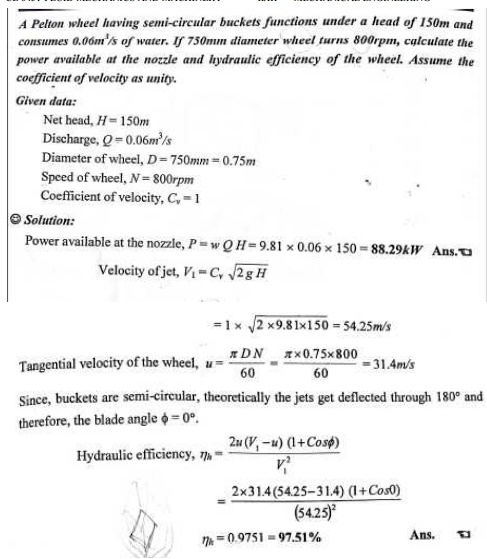
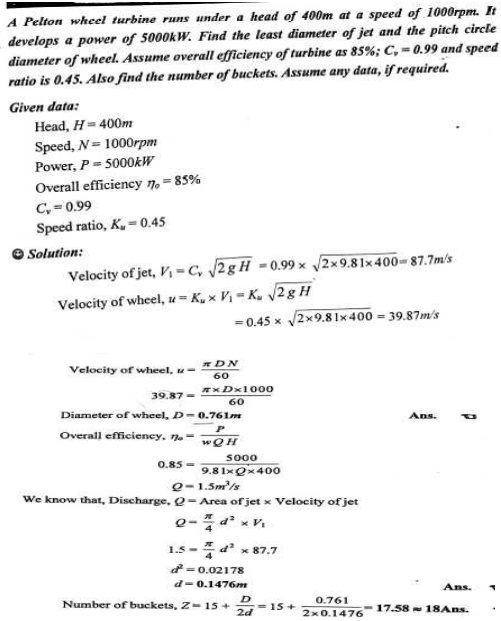
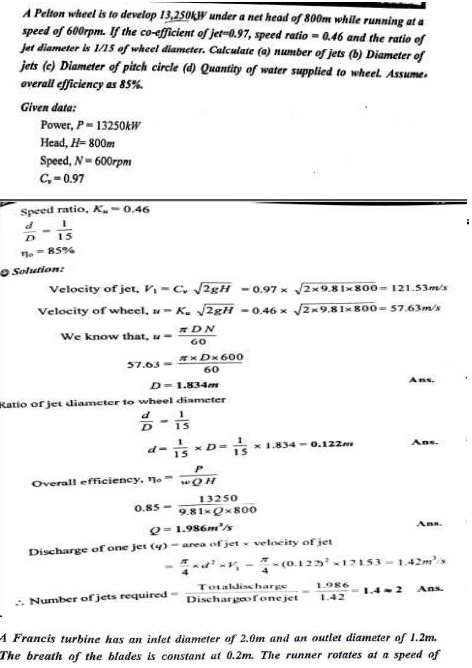

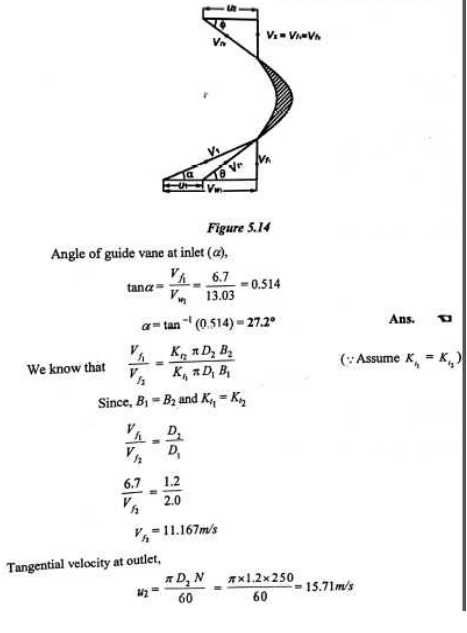

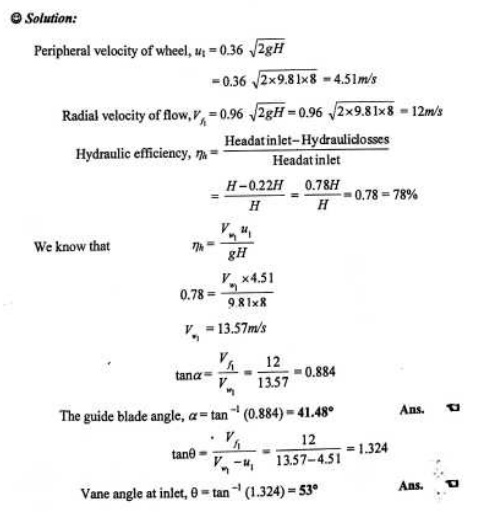
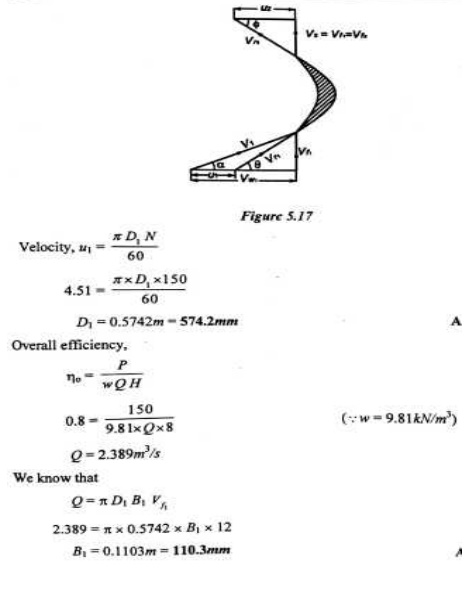
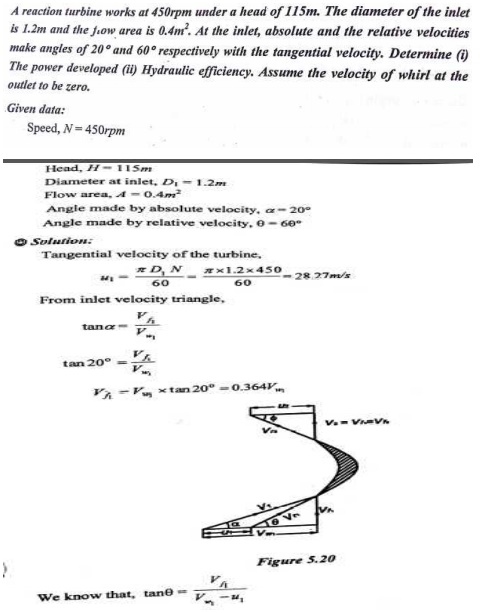

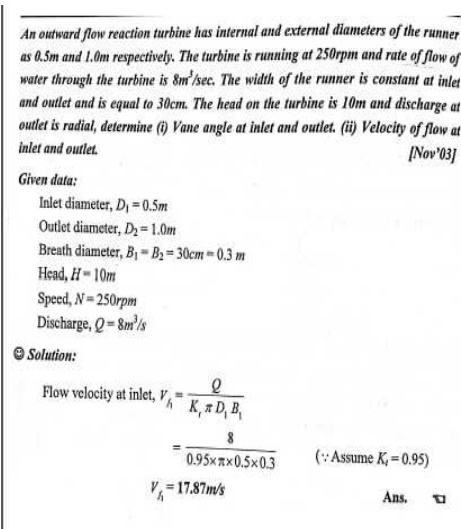
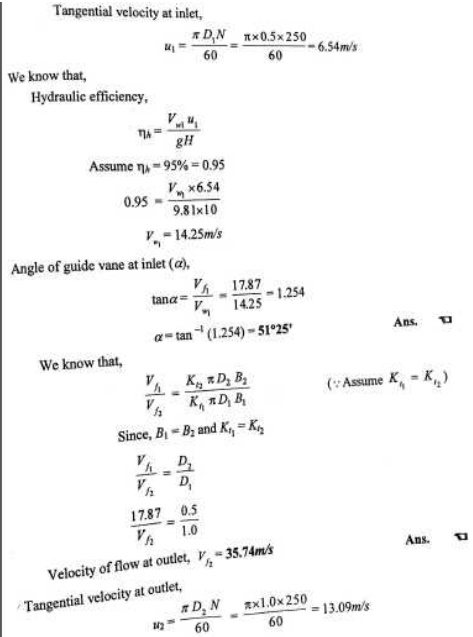
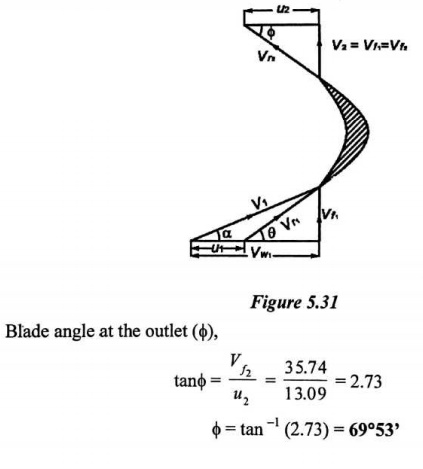
Related Topics